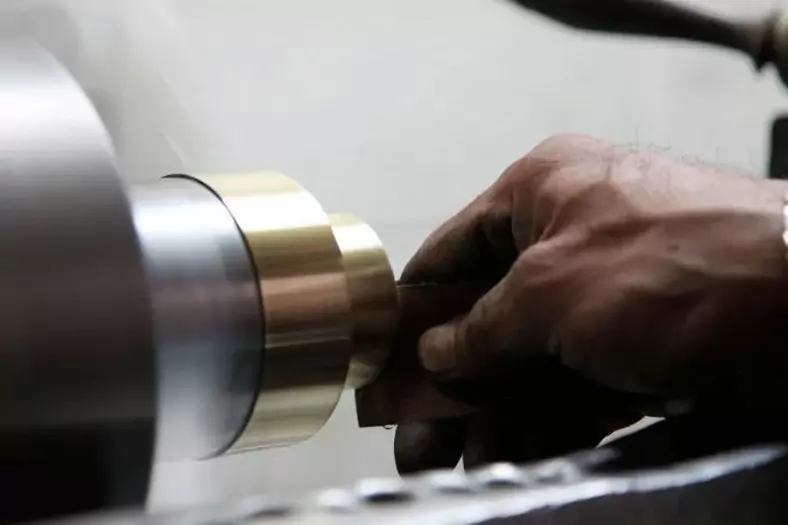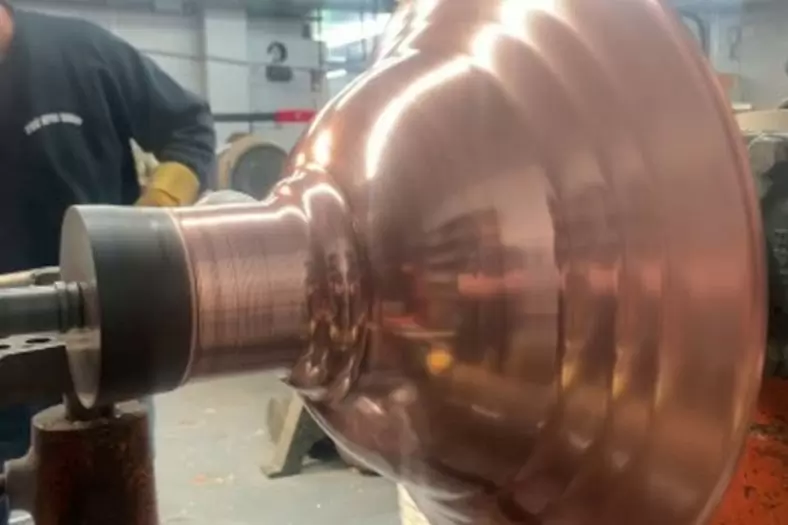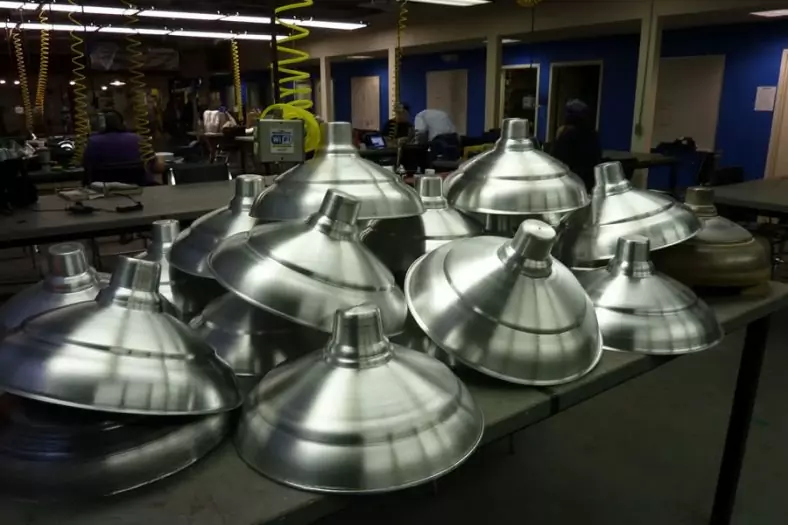Abstract: Spin forming is an advanced manufacturing technology for achieving non-cutting processing of thin-walled rotating parts, widely used in aerospace, automotive manufacturing, petrochemicals, and other fields, and has become an important direction in precision plastic forming. This article outlines the development process of china spin forming equipment and related technologies, analyzes the characteristics and gaps of china and foreign spin forming equipment, evaluates the research status and level of china lathe spinning equipment, and looks forward to the development trend of spin forming equipment.
Keywords: Lathe spinning technology; Spin forming machine; Spin forming technology

What Is Spin Forming Technology
Spin forming, as a typical continuous local plastic forming technology, has become an important direction in the development of precision plastic forming technology due to its many advantages such as static forming (without impact, vibration, and environmental hazards), high product accuracy, good process flexibility, ease of mechanical and automation implementation, and material saving. It is an advanced manufacturing technology for achieving non-cutting processing of thin-walled rotating parts and is widely used in mechanical, electronic, chemical, automotive, aerospace, and defense industries.
The development of spin forming technology has also promoted the development of china metal spinning equipment and related technologies. Especially in recent years, the strong demand in the aerospace and defense industries, coupled with the overall improvement of China’s manufacturing level, has brought Chinese spin forming equipment research and development to a new height, entering a stage of steady development.
Lathe Spinning History and Review
In the early 1960s, to address certain product forming issues, some military departments (mainly in the aerospace field) began applying spinning technology to process products such as aircraft auxiliary fuel tanks and engine combustion chambers. They started using homemade simple spinning equipment. Aerospace, weapons, and machinery manufacturing departments successively developed multiple spinning machines, which to some extent solved the processing problems of certain key components. Beijing Aerospace Manufacturing Engineering Research Institute was the first unit in China to develop spinning equipment and successively developed PX series general spinning lathes and SY series heavy-duty spinning lathes, totaling more than 30 units.

Subsequently, units such as Beijing Nonferrous Metal Research Institute, Beijing University of Aeronautics and Astronautics, Xi’an Heavy Machinery Research Institute, Qinghai Heavy Machine Tool Factory, Fujian Machinery Science Research Institute, Changchun Institute of Weaponry No. 55, and Wuhan Heavy Machine Tool Factory also introduced spinning equipment. Most of these machine tools are simple mechanical or hydraulic imitation shaping machine tools, with a horizontal double-wheel structure, with a maximum tonnage of 600 kN and capable of spinning parts with a maximum diameter of 2400mm.
Due to the limitations of the overall manufacturing and design levels in China at that time, these devices generally had some issues. They exhibited poor reliability, frequent machine failures, unstable quality of hydraulic components with serious leakage, outdated machine operation systems leading to discontinuous spinning processes and low product quality, and insufficient communication between design and process personnel resulting in some machine functions being imperfect.
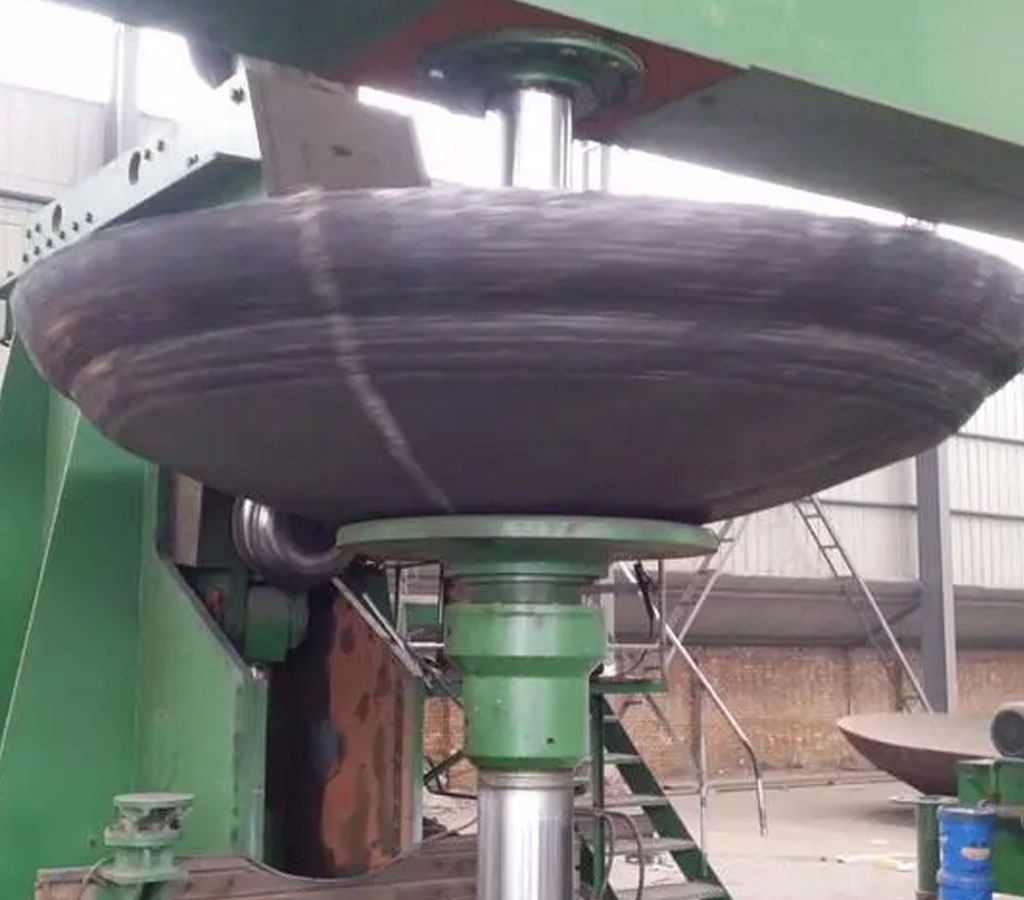
In view of the above problems, since the late 1970s, various departments have successively introduced dozens of spinning machines from countries such as Spain, Germany, the United States, Russia, and Italy. These machines have stable and reliable performance, easy operation, stable hydraulic systems, few faults, and a high degree of specialization, showing a serialized trend.
The equipment forms not only include general spinning lathes but also other specialized machine tools such as closing spinning, head spinning, and wheel rim spinning; the structural forms include single-wheel, double-wheel, and three-wheel horizontal structures.
Due to restrictions on the introduction of foreign weapons and equipment technology into China, the import of large-scale spinning equipment has been restricted, which has constrained the development of large-scale key components and the progress of the defense industry in China.
Moreover, after more than ten years of use, the hydraulic systems of these devices entered a period of frequent failures, the control systems needed updating, some functions could not meet the requirements of process development, and maintenance, repair, upgrading, and transformation issues gradually emerged.
Since the late 1980s, with the development of various sectors of the national economy in China, industry professionals have realized that spinning equipment is a key factor restricting the progress and development of spinning technology. Through the digestion and absorption of imported machine tool technology and the improvement of china manufacturing and control technology levels, the design, manufacturing, and performance of spinning machines have been greatly improved. In the late 1980s, Harbin Institute of Technology developed the first automatic reverse spinning lathe through lathe transformation, based on the principle of teaching robots, using self-learning motion control methods. The machine automatically memorizes the manual spinning process of the workpiece, completes the trajectory planning and processing process control of the workpiece, and realizes the purpose of automatic batch production.
Subsequently, Institute No. 55 also carried out research on automatic reverse spinning lathes. Xi’an Heavy Machinery Research Institute developed a PLC-controlled heavy-duty spinning lathe, with its spindle speed control system, wheel longitudinal feed hydraulic servo system, imitation system, etc., all controlled by PLC, but the spindle still uses DC motor drive and controllable silicon excitation; the longitudinal movement of the wheel uses a servo pump control hydraulic motor speed control system, and an electro-hydraulic imitation valve is used for imitation control.
In recent years, based on summarizing the past research experience, units such as Beijing Aerospace Manufacturing Engineering Research Institute, Changchun Institute of Weaponry No. 55, and Beijing University of Aeronautics and Astronautics Institute of Modern Technology have aimed at the international level, used advanced design methods and concepts, and adopted SIMENS840D and BOSCH proportional servo valve control systems, servo cylinder drive, grating position feedback, roller guide rail guidance, and AC variable frequency speed regulation and other advanced technologies, to launch a new generation of domestically produced CNC heavy-duty spinning lathes, achieving the upgrade and replacement of china spinning machines. The maximum tonnage of the machine tool is 600 kN, and the overall performance reaches the international advanced level. Figures 1 and 2 are some CNC numerical control spinning lathes developed by Beijing Aerospace Manufacturing Engineering Research Institute in recent years.
Roller spinning machines developed by units such as Shenyang Institute of Metals Research and Institute No. 55 also have good practicality, absorb advanced design ideas from foreign equipment, have stable performance, and meet the development needs of domestic automobile and petrochemical industries.
China Lathe Spinning Equipment Development Level and Current Situation
In China, the development level of spinning equipment has experienced significant advancements and challenges. Historically, china lathe spinning equipment faced limitations due to the overall manufacturing and design levels. Early homemade spinning machines encountered issues such as poor reliability, frequent failures, and outdated operation systems, hindering the continuous development of spinning technology.

Control System
In recent years, domestically developed CNC spinning lathes have mostly achieved NC or CNC control. Generally, the control systems used for metal cutting machine tools can also be applied to spinning lathes. These systems mainly include those developed by German SIEMENS, French NUM, Japanese FANUC, as well as china metal spinning companies such as China Zhufeng, Beijing Aerospace Machine Tool CNC System Company, Huazhong CNC Company, and the control systems developed by Shenyang Advanced CNC National Engineering Research Center. The system can be selected based on machine tool precision, drive motor power, and user requirements.
Compared with metal cutting machine tools, spinning lathes are generally hydraulically driven under heavy load. Due to the compressibility of hydraulic oil, the system’s rigidity is relatively poor, and there are issues such as nonlinear electro-hydraulic control and low response frequency of hydraulic components, which bring certain difficulties to the adjustment of static and dynamic characteristics. To address this, some companies have developed hydraulic modules driven by electro-hydraulic servo, equipped with multiple adjustable parameters such as PID feedforward control, dead zone compensation, friction force, and nonlinear compensation. For example, SIEMENS’ 840D system embeds a dedicated drive module for electro-hydraulic servo and can be conveniently modified and set through a friendly human-machine interface, matched with the selected servo valve and cylinder, bringing convenience to the adjustment of system dynamic/static characteristics. Currently, SIEMENS’ 840D has become the mainstream control system for spinning lathes.
Control precision can be ensured by closed-loop control systems composed of grating rulers and servo valves/servo cylinders, as well as closed-loop control systems composed of encoders and AC or DC variable frequency motors. By adopting methods such as improving monitoring resolution and adjusting amplifier PID parameters under the premise of adopting full-closed-loop and semi-closed-loop position and speed control, the control precision of the system can be enhanced.
Drive System
The drive system of spinning lathes includes spindle drive and feed drive. The spindle drive can adopt AC variable frequency motor and DC variable frequency motor drive; the feed drive mainly adopts two methods: servo motor + ball screw and servo hydraulic cylinder drive.
Currently, AC variable frequency speed regulation is mainly used for spindle drive. Compared with DC variable frequency speed regulation, it has the advantages of simple structure, small volume, low inertia, low cost, easy maintenance, and durability. It is easy to adjust speed, can expand capacity, achieve high-speed and high-voltage operation, and features soft start and quick braking, such as the widely used SIEMENS 6SE70 vector control three-phase AC variable frequency speed regulation system. Servo motor + ball screw feed drive is mainly suitable for medium and small spinning lathes, with a simple structure, high transmission efficiency, no crawling phenomenon, and good dynamic characteristics; servo hydraulic cylinder feed drive can meet the demand for larger spinning force, but it requires adding a hydraulic pump station, with greater difficulty in adjusting static and dynamic characteristics. Currently, both drive forms are applied domestically. Figure 3 and Figure 4 respectively show spinning lathes driven by ball screws and servo hydraulic cylinders.
Guidance system
There are three main types of guide systems: sliding guide rails, hydrostatic guide rails and rolling guide rails. Sliding guide rails are currently used in many applications due to their simple structure and ease of use. However, due to sudden changes in dynamic and static friction, they can easily lead to “crawling” phenomena and affect the stability of the equipment; hydrostatic guide rails have an extremely thin layer of oil film and a low friction coefficient. Very small, which can better inhibit the crawling phenomenon during the spinning process. However, because the wheel base is subject to a large tilting moment, the guide rail is difficult to balance, which can easily lead to a deterioration of the geometric accuracy of the workpiece. On spinning equipment Rarely used. In recent years, Beijing Aviation Manufacturing Engineering Research Institute has adopted rolling guide technology in spinning machine tools to improve the dynamic/static characteristics of the system and improve the stability of the equipment. For large-scale spinning equipment, the composite guide of sliding guide rails and rolling guide rails can combine the advantages of both, and the performance is stable and reliable (Figure 5).
Structural Design
With the in-depth research on the spinning deformation theory and the development of finite element technology, the design methods and means are constantly improved. The overall structure and main load-bearing components have been designed and checked by finite element analysis, so that the layout of the spinning machine and the structural design can be improved. The materials and stress distribution are more scientific, which not only ensures the rigidity of the structure, but also takes into account the manufacturing process of the structure.
- Lathe bed. The lathe bed can adopt either integral casting or welding structures, depending on the specific situation. The guide rail adopts an integral steel-inlaid structure and is connected to the machine bed with screws. It is integrally ground and surface quenched and tempered to improve wear resistance, with a straightness of 0.02mm/m~0.03mm/m.
- Wheel base carriage. The carriage structure can adopt integral or split structure. Integral type usually installs each wheel on the same frame mechanism. The axial movement of each wheel is controlled by the same signal and driven by the same power, which eliminates synchronization errors and can work stably under high rotation pressure; the split structure has greater High flexibility, it can realize multi-round and multi-path synchronous spinning, and the synchronization is realized through the control system. Generally, split structures are often used in general rotating wheels, double rotating wheels and special equipment.
- Spindle system. The main function of the spindle system is to transmit torque and realize spindle rotation. At present, the spindle speed of domestic spinning machine tools has achieved stepless speed change, which is more in line with the deformation requirements of the spinning process. At the same time, for spinning tapered parts and curved surface parts, the linear speed of the spinning process should be kept constant, that is, the spindle speed is required to be automatically adjusted in a timely manner according to changes in the diameter of the part. Therefore, the spindle system should be able to achieve a constant linear speed function .
At present, the typical transmission scheme of the spindle is a variable frequency motor-gearbox-spindle box. Through the adjustment of the transmission mechanism, the speed range can be adjusted. The variable frequency motor can achieve stepless speed change in each speed range. With the advancement of design concepts and methods, coupled with the improvement of the overall manufacturing level, the spindle system structure is more compact, the movement is smooth, and the efficiency and precision are higher.
Machine Tool Accuracy
Due to the improvement of design and manufacturing levels and the continuous improvement of control systems, the accuracy indicators of domestic spinning machine tools are basically close to the level of foreign spinning machines.
- Horizontal positioning accuracy 0.012mm ~ 0.015 mm;
- Repeat positioning accuracy 0.008mm ~ 0.010mm;
- Longitudinal positioning accuracy 0.012mm ~ 0.020mm;
- Repeat positioning accuracy 0.006mm ~ 0.0012mm;
- Spindle radial runout 0.010mm ~ 0.020mm;
- Spindle end face runout 0.010 mm~0.020mm.
The Development Trends of Lathe Spinning Equipment
Large-scale and serialized.
With the advancement of national defense technology industry, there is a growing demand for large-diameter, high-precision thin-walled rotating parts. Spinning forming is the most effective advanced manufacturing technology for such parts. However, the development of large-scale spinning equipment domestically is still in the conceptual stage.
At the same time, large-scale spinning equipment is also a restricted import product abroad, severely restricting the development of “ace in the hole” weapons. Countries like Europe and the United States have independently developed large-scale spinning equipment with intellectual property rights, such as the 4000kN dual-wheel vertical spinning machine in the United States. Meanwhile, domestic spinning machine production is mostly customized according to user requirements, and even spinning machines developed by different units or the same unit have not formed a series. The parameter ranges of different models of spinning machines overlap too much or have too large differences, without forming a reasonable gradation, which is not conducive to the overall improvement of spinning equipment.
Multi-functional and flexible.
With the expansion of the application scope of spinning technology, the advantages of spinning technology have been fully utilized. Spinning can not only accomplish spinning thinning but also flanging, closing, lap joining, necking, and shaping processes. For some mass-produced parts, multiple processes should be completed on one spinning machine. Therefore, spinning machine design should consider its functional and flexible characteristics. Developing a spinning machine similar to a machining center will be the direction of development for spinning equipment and technology.
Specialization and automation.
With the rapid development of the national economy, on the one hand, the annual output targets of some industries such as automobiles continue to increase, and processing efficiency will become one of the important factors restricting their development. Spinning machines can only meet their production needs by achieving specialization and automation. Taking automotive pulleys as an example, with an annual demand of tens of millions, only dedicated pulley spinning machines can meet production requirements.
In addition, there are specialized machines for fan flanging, head spinning, and lamp spinning, etc. On the other hand, for some special materials or parts with special structures, corresponding special equipment needs to be developed to meet their processing requirements. For difficult-to-deform materials such as tungsten, molybdenum, niobium, titanium alloys, and high-temperature alloys, which have poor room temperature plasticity and processing properties, spinning forming must be carried out under heating conditions, and spinning equipment needs to be equipped with special heating auxiliary devices and temperature measurement devices.
Correspondingly, to ensure the accuracy of spinning equipment itself, important components need to be cooled. For cylindrical parts with internal ribs and special-shaped products with high surface quality requirements, internal spinning processes are often required. Developing special internal spinning machines is the best way to solve the spinning forming of such parts.
For some thin-walled pipes with small diameters and large height-to-diameter ratios, some pipes even have a certain taper, such as street lamp poles and oil drilling rods, which cannot be spun with core molds. To ensure the surface quality and straightness of these products, an external force must be applied to the free end of the pipe during the spinning process. Special tension spinning machines need to be developed to process such parts. The tension is controlled by the computer and matched with the deformation of the pipe, but it must be less than the yield strength of the material. The effective action of tension eliminates the bulge of the material during the deformation process, ensuring the straightness of the pipe.
BE-CU SPUN: China Best Metal Spinning Companies and Large Spin Forming Shop
After more than 40 years of development, domestic spinning equipment has significantly improved its design and manufacturing levels. The variety of spinning machine tools is gradually becoming more complete, including powerful spinning machine tools, ordinary spinning machine tools, internal spinning machine tools, hot spinning machine tools, spoke spinning machine tools, pulley spinning machine tools, head spinning machine tools and other special-purpose spinning machines. Spinning machine.
With the advancement of design concepts and methods, domestic spinning equipment has a good cost performance and is basically close to the international advanced level. In particular, the smooth flow of international procurement channels has enabled china spinning machine tools to have the ability and level to participate in international competition. In addition, the design and manufacturing of spinning equipment should be closely integrated with the spinning process. Process requirements are the driving force for the development of spinning equipment. For example, the newly emerged spin forming technology of non-axisymmetric parts is a challenge to traditional spinning technology and is bound to It will promote the development and progress of spinning equipment.
Zhongshan BE-CU Metal Spinning Co., Ltd., located in Zhongshan,China, With 20 years of experience in metal spinning service research and development, BE-CU has evolved into one of the leading CNC metal spinning service manufacturers. Our expertise lies in customizing CNC-controlled spinning machines and producing metal spun parts made of stainless steel, aluminum, copper, carbon steel, and titanium alloys.
The core strengths of BE-CU in their ability to achieve large forming thicknesses and high precision in their finished products. We have not only developed our own CNC spinning machine, but also equipped with the Leifeld brand from Germany.. The company’s manufacturing capabilities include a wide range of product sizes, with diameters ranging from 50 to 2100mm and lengths up to 500mm. Their processing material thicknesses are impressive, handling stainless steel from 0.5 to 15mm, iron from 0.8 to 15mm, aluminum from 0.8 to 15mm, with an accuracy of ±0.01mm.
We have two factory areas, with metal spinning as its core business. Additionally, we are equipped with 3D laser cutting, robotic arm laser welding, tube bending, hydraulic presses, and other supporting processes. This comprehensive production capability enables them to meet large-scale supply demands, offering competitively advantageous products to their customers.
Our rich project experience is evident in their diverse product category. we produced items such as Venturi tubes, Venturi valves, catalytic converters, aluminum barrels, milk buckets, electrical appliance liners, titanium alloy cutlery, shielding covers, signal transmission and reception covers, fan outlets/collectors/guide rings, communication covers, aircraft tail jets/combustion chambers/streamlining covers, stainless steel funnels, automotive shock absorber casings, copper hot pots, end caps, and more. These high-quality metal spun products have served numerous domestic manufacturers.
-
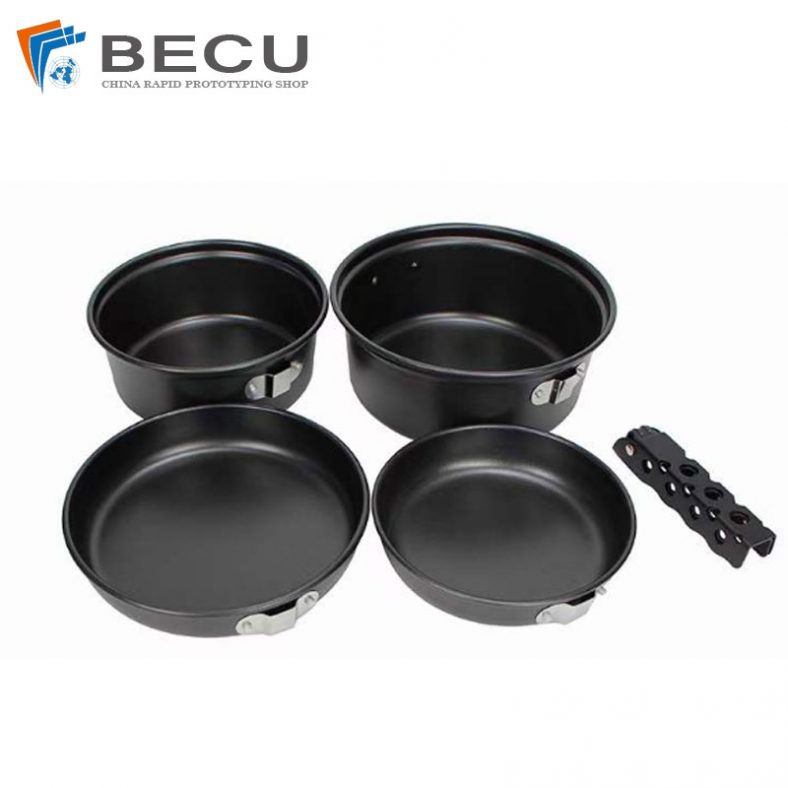
Prototype CNC Spinning Stainless Steel 316L Outdoor Camping Pot
-
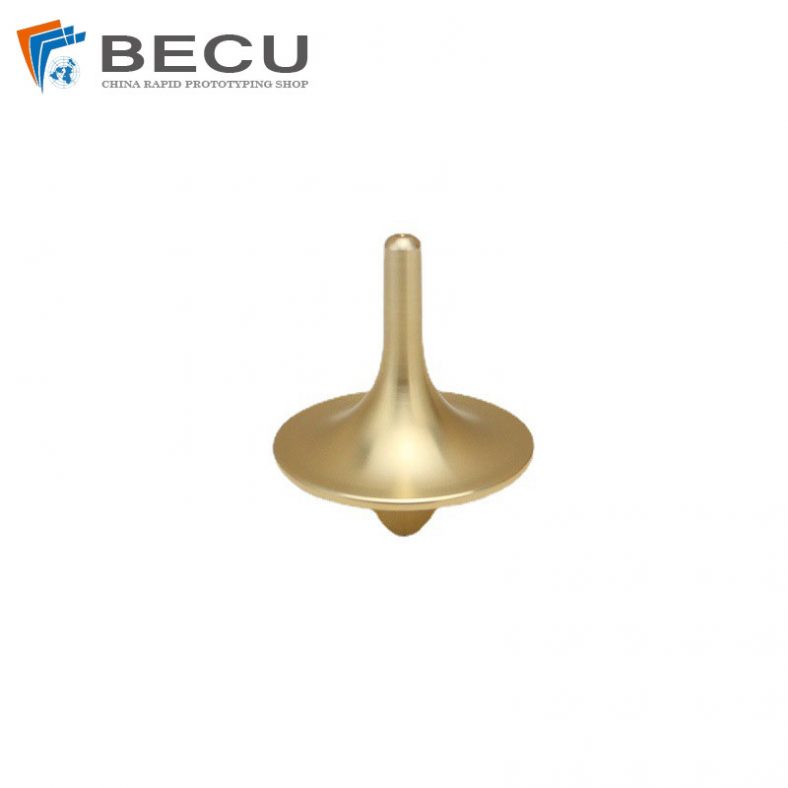
Metal Spinning Top Toy
-
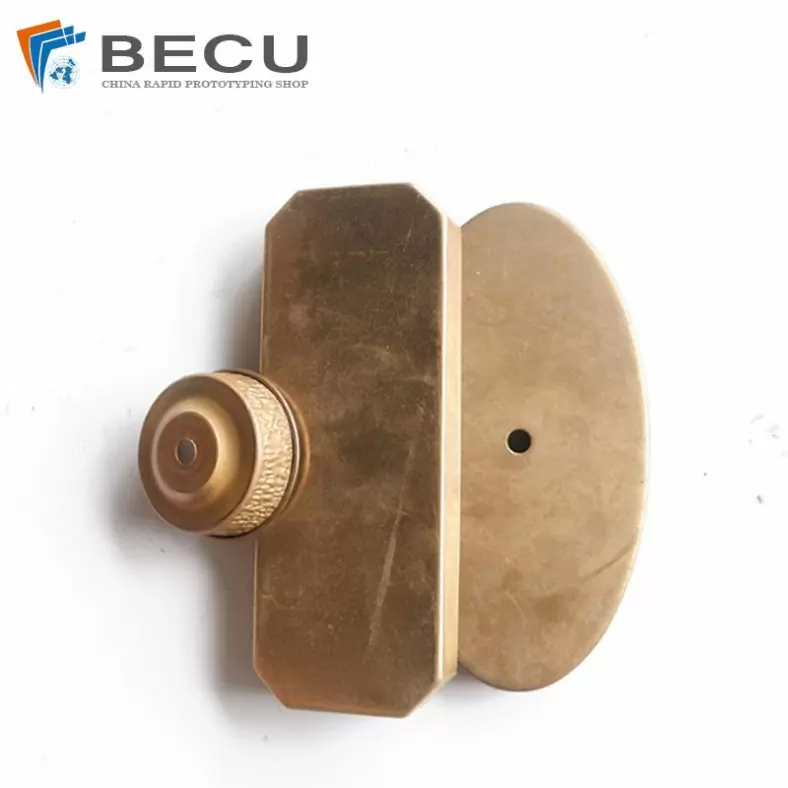
Precision CNC Spinning Art Lighting Accessories
-
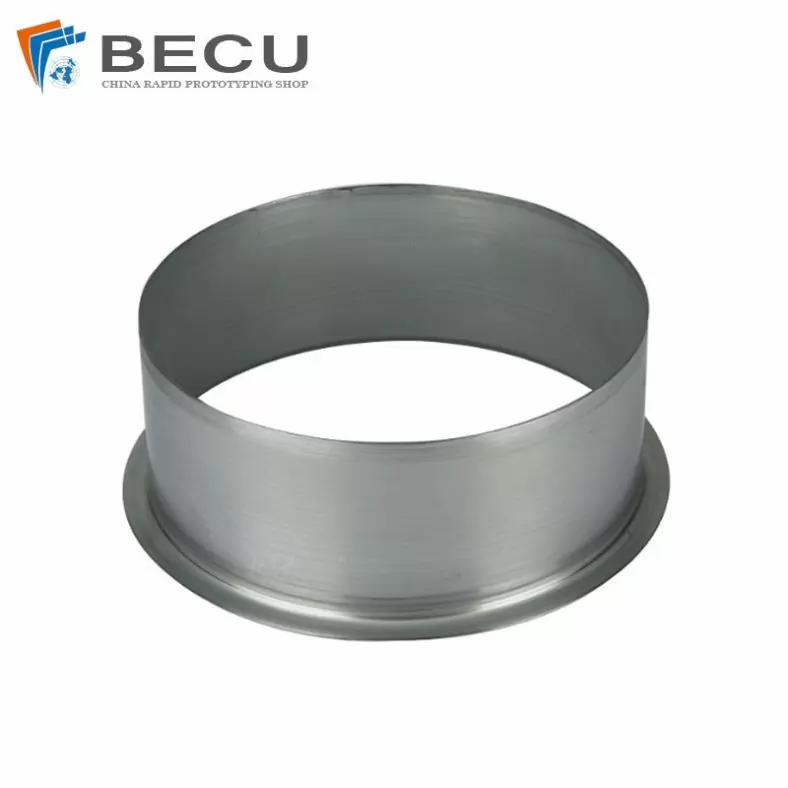
Precision Spinning Galvanized Sheet Draught Fan Accessories
-

Precision CNC Spinning 200mm Fitness Kettlebell
-

287mm Metal CNC Spinning Machinery Parts
-

Metal Spinning 350mm High Voltage Electrode Shield
-

Aluminum Spinning Parts For Automobile Shock Absorbers





